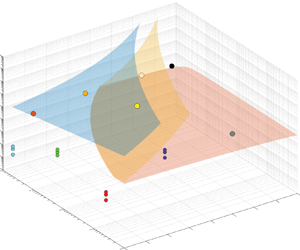Article contents
Close-contact melting of shear-thinning fluids
Published online by Cambridge University Press: 28 July 2023
Abstract

This study aims at establishing a model for close-contact melting (CCM) of shear-thinning fluids. We presented a theoretical framework for predicting the variation of liquid melt film thickness and motion of unmelted solid for both Carreau and power-law fluids. We identified the appropriate energy equation considering the convective effect and derived an analytical temperature profile across the liquid film. Using the lubrication approximation, force equilibrium relationships and the corresponding numerical approaches were built. By using laser interferometry and photographic recording methods, we found excellent agreement between numerical solutions and experimental results for Carreau liquids, revealing that the convective effect weakens heat transfer and melting rate. We identified the critical liquid film thickness that determines three situations of CCM in the theoretical model for Carreau fluids. Numerical prediction demonstrated that the CCM of Carreau fluids can be almost equivalent to that of power-law fluids if the initial film thickness is greater than the critical value. Finally, approximate analytical models were developed for both Carreau and power-law models. For the applicability of the approximate analytical solutions, we derived two- and three-dimensional dimensionless phase diagrams of validity range and identified a key dimensionless group  $(\varLambda Re)^{4/3}{Re}\left [3\ln (Ste+1)\right ]^{1/3}{Pe}^{-1/3}$, where
$(\varLambda Re)^{4/3}{Re}\left [3\ln (Ste+1)\right ]^{1/3}{Pe}^{-1/3}$, where  $\varLambda$ is dimensionless characteristic time, Re is Reynolds number, Ste is Stefan number and Pe is Peclect number. The reliability of the approximate solutions was verified by comparing with the numerical results. These approximate solutions enable convenient and low-cost computational prediction of the dynamic CCM process of shear-thinning fluids.
$\varLambda$ is dimensionless characteristic time, Re is Reynolds number, Ste is Stefan number and Pe is Peclect number. The reliability of the approximate solutions was verified by comparing with the numerical results. These approximate solutions enable convenient and low-cost computational prediction of the dynamic CCM process of shear-thinning fluids.
- Type
- JFM Papers
- Information
- Copyright
- © The Author(s), 2023. Published by Cambridge University Press
References
- 5
- Cited by



